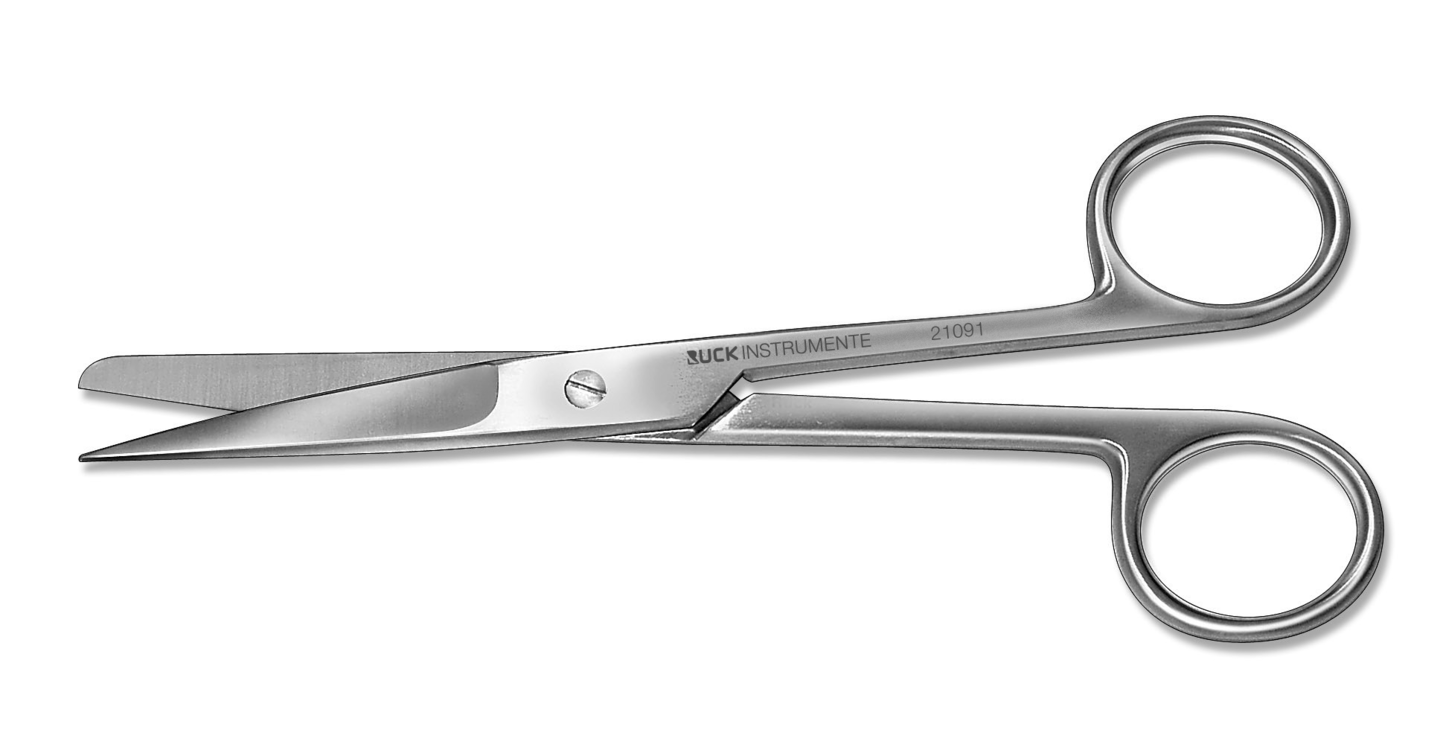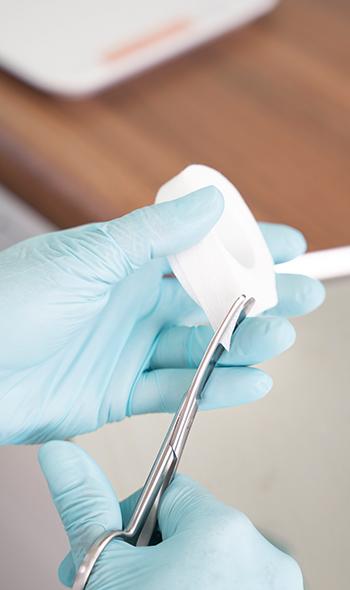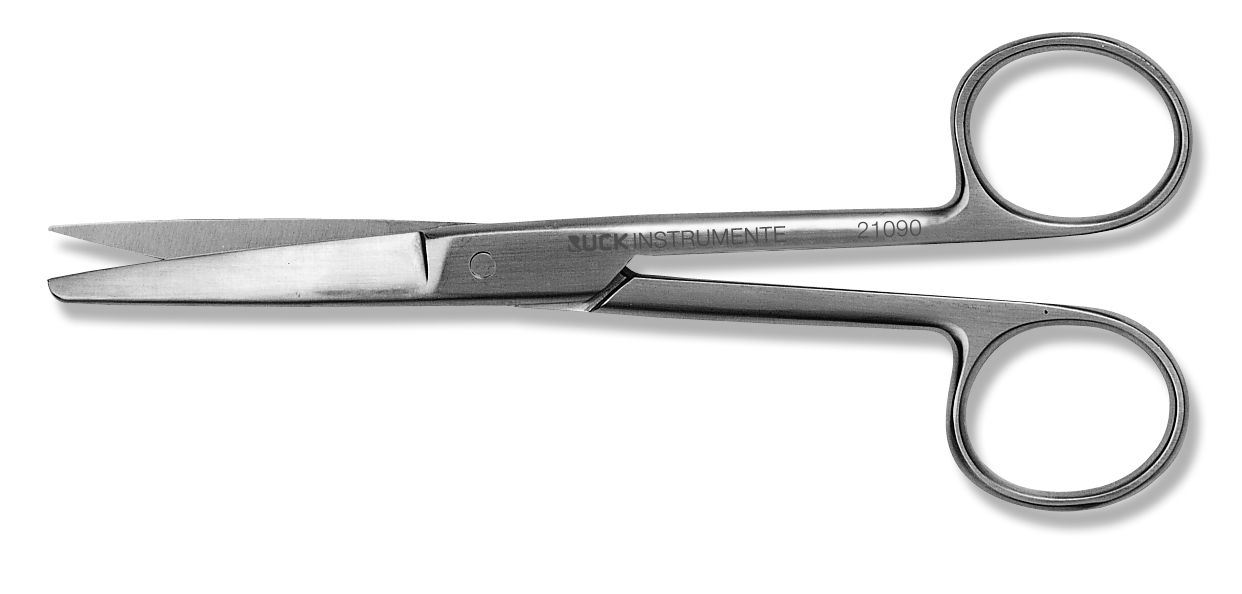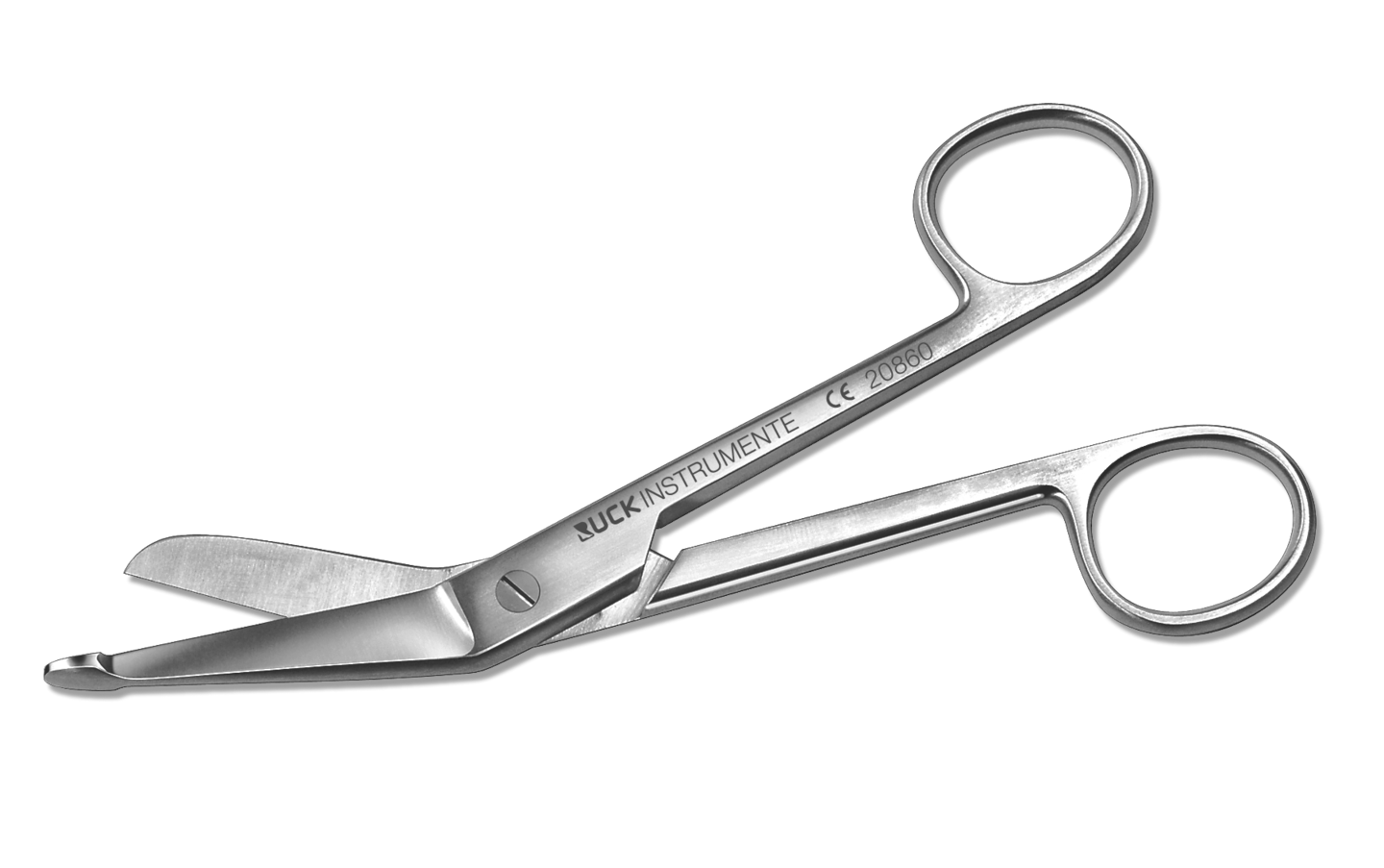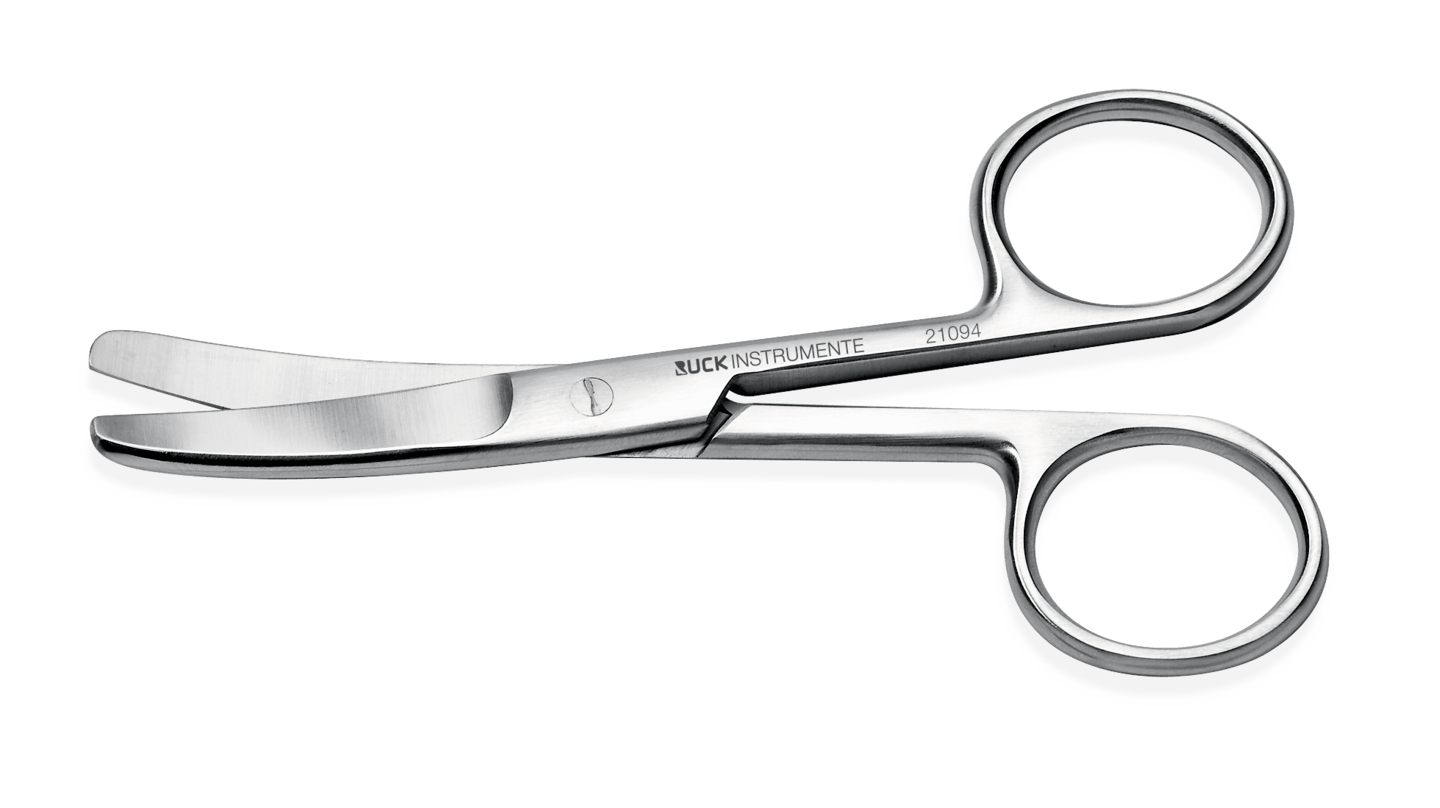Dressing scissors
Buy bandage scissors: For cutting and removing dressings
Particularly in medical foot care and podiatry, special bandage scissors are required for the professional cutting of bandages. These special instruments, also known as Lister scissors, are scissors that usually have an angled, laterally flattened blade. We also offer bandage scissors that are specifically designed for cutting off fresh bandages. Find the right professional bandage scissors from our own RUCK brand or from brand manufacturers such as Aesculap in our product range.
For what purpose are bandage scissors used?
Professional bandage scissors offer the following application possibilities and purposes:
Depending on the model, the possible uses of bandage scissors include:
- Cutting through and removing dressings: Our Lister type bandage scissors with angled front end are specifically designed for the professional cutting and removal of bandages. The so-called knee bend shape ensures that dressings can be removed safely and comfortably without any inconvenience for the patient. Cutting is possible with a wide variety of dressing materials such as gauze dressings, tape or plasters.
- Moving dressings: Another functional feature of a pair of Lister scissors is the flattened and rounded lower blade side. This makes it possible to carefully slide even tight-fitting bandages without causing unnecessary risk of injury.
- Cutting through clothing during first aid: Another use due to the safe shape of bandage scissors is as trauma scissors. During first aid actions, they can be used to quickly and reliably cut through clothing without endangering patients with you.
- Cutting off bandages or acute dressings: Bandage scissors with straight blade arms are specifically used to cut off fresh dressing material or, depending on the design, even to cut through acute braces such as the GOLDSTADT professional Classic brace for nail problems.
What types of bandage scissors are there?
Bandage scissors differ mainly in these following two main categories:
- Bandage scissors, which are used to cut through and safely remove applied bandage materials in various designs.
- Bandage scissors, which are used to cut and divide fresh dressing material.
What is especially special about bandage scissors?
Bandage scissors according to the Lister model are provided with a distinctive shape with a knee bend. The front end of the blade is angled, which makes cutting through dressings especially easy. In addition, the cutting edges are precisely ground for clean, fast and precise cutting. To guarantee patient well-being, bandage scissors also have rounded blade tips, also called tip guards. Another feature is the flattened underside of the lower blade. This closes any risk of injury when removing dressings.
How are bandage scissors properly nourished?
Sterilised or disinfected instruments along with correct skin and hand hygiene are particularly important when removing dressings or clothing during first aid. Bandage scissors, as instruments that are part of everyday life especially in the medical field, can therefore be sterilised and disinfected throughout. In most cases, they are therefore also made of high-quality, rust-free and easy-to-clean stainless steel.
When storing bandage scissors, it is also important to ensure dry storage along with regular cleaning before and after each application.
Buy bandage scissors - in our RUCK Online Shop
Discover high-quality, professional bandage scissors in the best material quality and workmanship in our RUCK online shop. Our range includes bandage scissors for removing bandage materials quickly and safely along with cutting off fresh bandage material. Even cutting through acute clasps for nails is possible with the appropriate model. Our RUCK own brand products include the RUCK bandage scissors with tip protection for cutting through bandages along with the RUCK bandage scissors for cutting fresh bandage material. You can also discover high-quality bandage scissors from our private label partners such as Aesculap.





















































